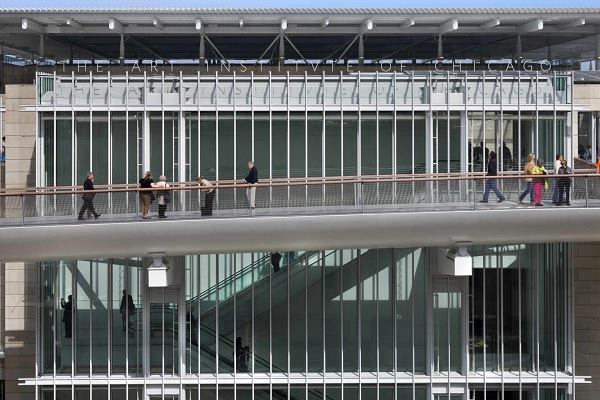If you build it, they may or may not come.
In addition, you will wind up paying much more for it than you thought.
Oh, and that halo effect? With all those people turning an empty corn field into a place of magic and the town near it into a tourist destination? Nine times out of ten, it ain’t gonna happen.
We have known this to be true for sports stadiums for years. In Cincinnati, where I live, we paid a hefty sum for two giant stadiums that are underutilized and have not generated that much economic activity. It also has been an open secret in the cultural community that the same is true for new theaters and museums buildings: They are rarely necessary, almost always run over budget, and often fail to either attract the audiences or create the economic halo effect that their proponents promise.
A study done by the University of Chicago’s Cultural Policy Center on the last of these, soon to be released as a book, has helped air this dirty laundry. In case after case, Joanna Woronkowicz, Carroll Joynes, Norman Bradburn, and their team found that new cultural facilities built in the last few decades in the U.S. cost too much and did not deliver what they promised. The case of the Kimmel Center for the Performing Arts , The Philadelphia Orchestra’s awful new concert hall, is most well-known, as it contributed to the orchestra’s bankruptcy three years ago. In my hometown, I can point to the equally dismal National Underground Railroad Freedom Center, which the Museum Center took over two years ago in an effort to save it.
A big part of the conundrum is that the logical path that cultural institutions should follow— carefully and thoughtfully renovating and expanding their existing structures—is difficult to pursue because we live in a funding environment in which donors support splashy new structures they can put their name on. The leaders of these institutions know that they need more and better space, but the easiest way to get it is to make something recognizable and new so that they can then show that they have accomplished something (the “edifice complex”).
The resulting institutions rarely pay for themselves, either through attendance or by generating tax revenues from new coffee shops and renovated lofts around them. What they do is something important, however, and something the University of Chicago study does not catch: they act as anchors. Pouring money into museums and theaters might seem like the urban equivalent of throwing funds down the drain, except that something remains. That facility that brings people together for shared experiences also acts as a monument that, because of the sunk costs, is a stable and enduring presence. Cultural institutions are, in fact, the only type of building I know of that can justify the making of monuments in the sense of structures that act as repositories of our communal memories and values.
In an age that judges everything by “metrics,” the value of an anchor is as hard to judge as those budget overruns are easy to see. The very fact of endurance and the slow space that cultural institutions create become part of a community’s fabric, and this can takes decades to truly sink in. In Cincinnati, local arts funding group ArtsWave conducted surveys to find out whether people feel safer around cultural monuments, and whether cultural monuments improve their sense of belonging—but those are fairly loose and inconclusive figures.
The authors of the University of Chicago study are right. We should be very careful about over-investing in cultural institutions, especially silly ones like George Lucas’s museum that will now mess up Chicago’s unparalleled string of lakefront parks after failing to foul Golden Gate Park. Yet build we must, not so that they will come, but so that they—our collections, our symphonies, and the communities that have grown around them—will stay and coalesce around shared values fixed in concrete forms.
Aaron Betsky is a regularly featured columnist whose stories appear on this website each week. His views and conclusions are not necessarily those of ARCHITECT magazine nor of the American Institute of Architects.
